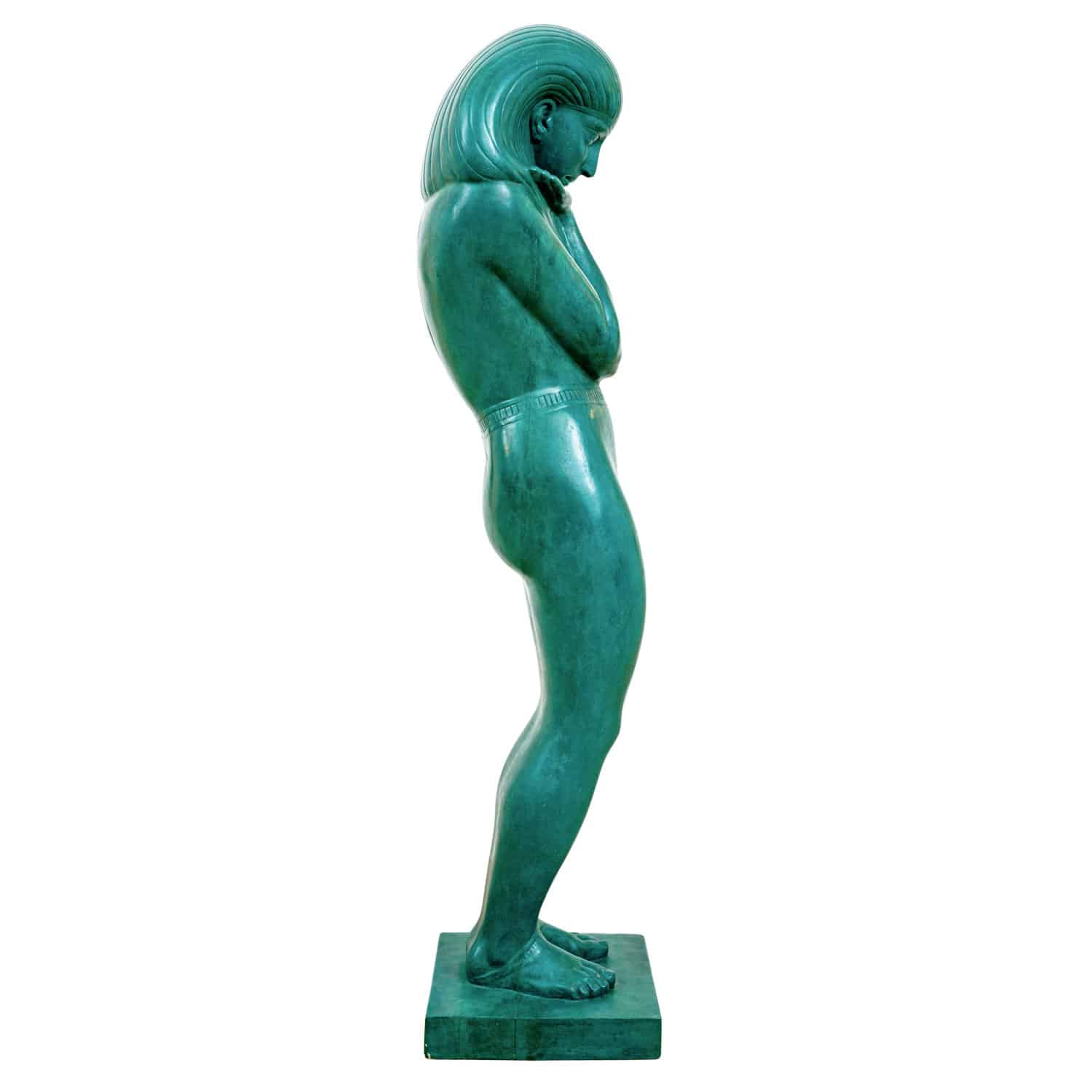Sculpture of an Egyptian Gustav Gurschner ca. 1912
Sculpture of an Egyptian, design and execution by Gustav Gurschner, ca. 1912, carved limewood turquoise oil paint, signed
Out of stock
Description
This extraordinary wooden sculpture of an Egyptian dignitary occupied a special place in Gurschner’s oeuvre. Gurschner underwent training in woodcarving already in his early years at Bozen Technical School. These acquired skills later enabled him to carve wooden models for his bronze sculptures.
As can be seen from a contemporary photo, it was placed in Gurschner’s Viennese studio garden grouped with other busts and sculptures. The exotic figure covered entirely in turquoise oil paint certainly stood out visibly from the group of other sculptures.
The androgynous figure probably represents a high-ranking dignitary in Ancient Egypt. She is reminiscent of a high priestess or pharaohess, its style reflecting depictions of the Amarna period, the time of the kings of the 18th dynasty. Characteristic of this period are rather androgynous figures, featuring elegantly elongated faces with narrow noses, accentuated eyes and large ears. Its delicate lines and ornamental garments are clearly in line with Gurschner’s works after 1910.
The sculpture reflects Gurschner’s enthusiasm for Egyptian art. With the beginning of systematic archaeological excavations in Egypt at the end of the 19th century, this exotic genre became popular in Europe and had an impact on the art world as well. Even more after the sensational discovery of queen Nofretete’s stunningly beautiful bust in 1912.
For many years, this sculpture was in the artist’s private collection. In 1951, Gurschner presented it to his grandson Harald Gurschner, who sold it to a private collector in 1989.
The contemporary photo with Gurschner’s studio garden can also be seen as a wonderful historic document. It allows us a glimpse into one of Vienna’s backyards, documenting the impressive dimensions of Gurschner’s workplace. He moved into the spacious studio in Vienna’s Lindengasse, in 1898, where he modelled his sculptures and even cast some of them himself.
Inquiry
By submitting the inquiry form, you agree to the use of your data for this inquiry. Privacy Policy




















